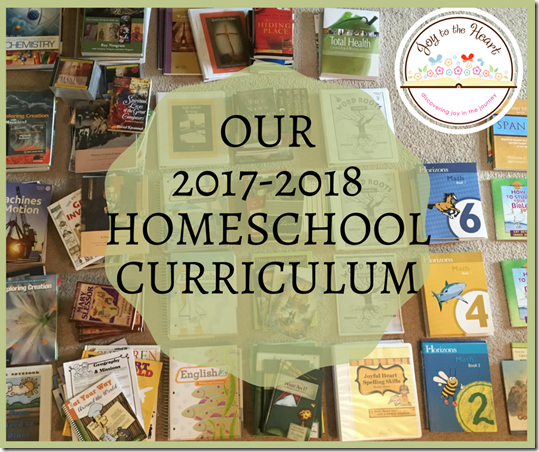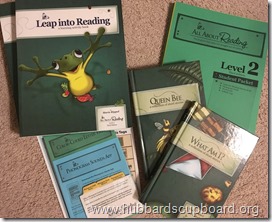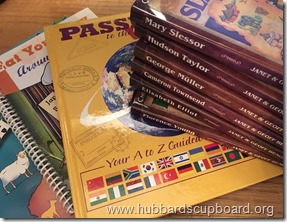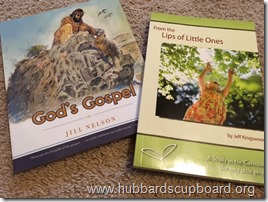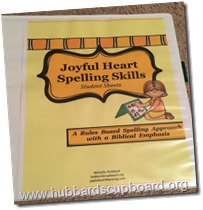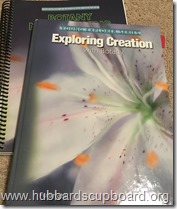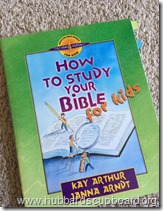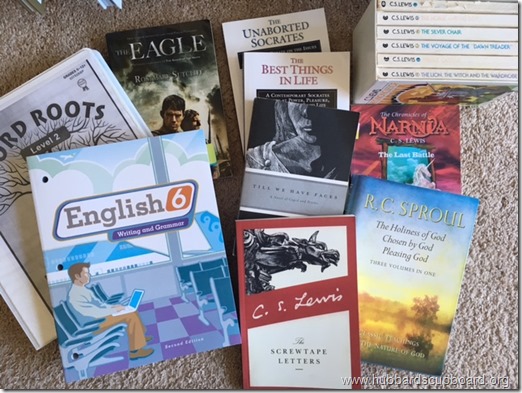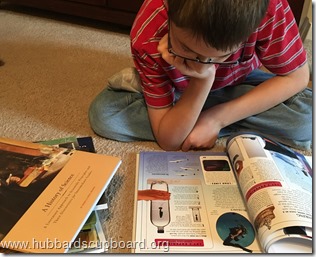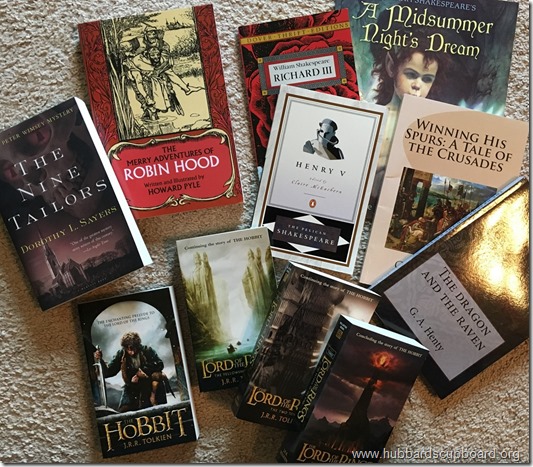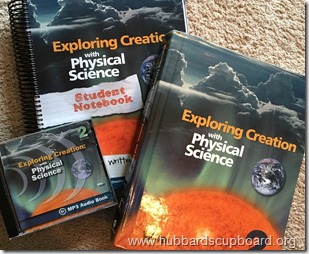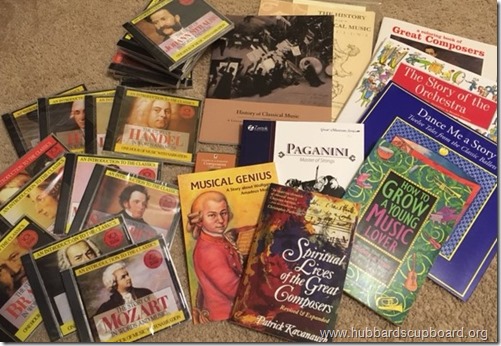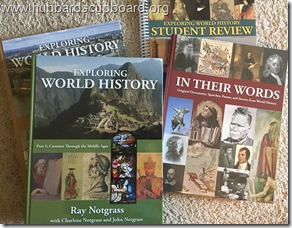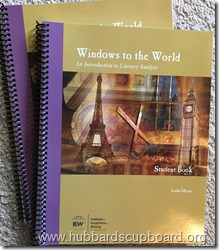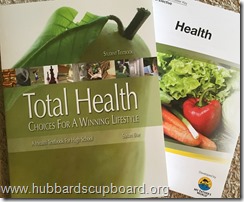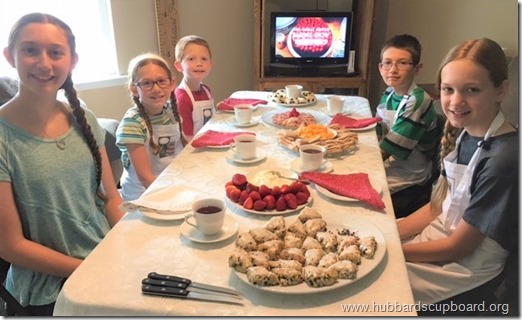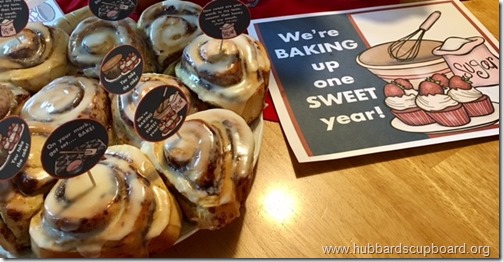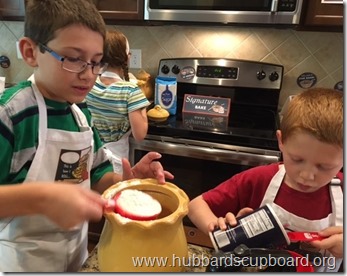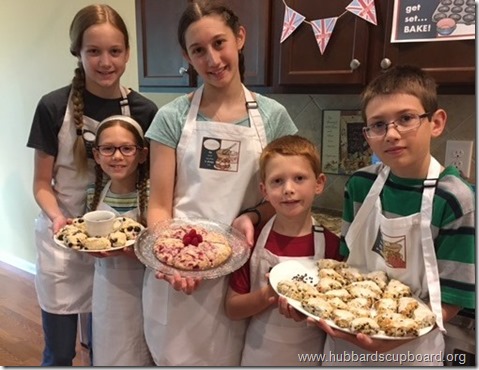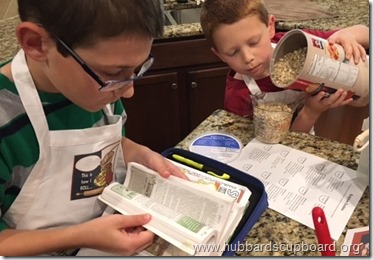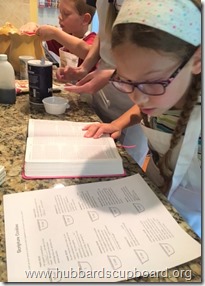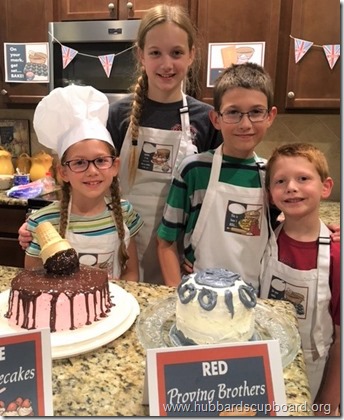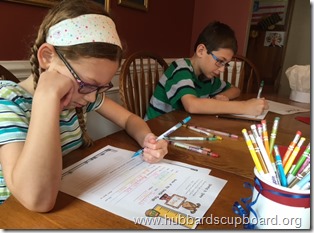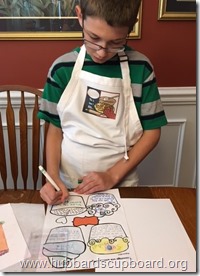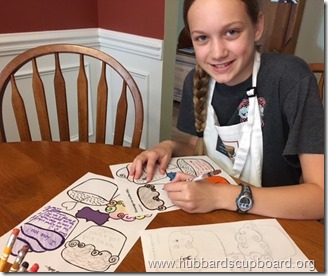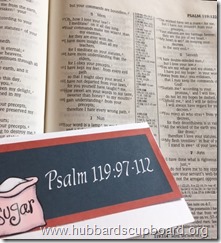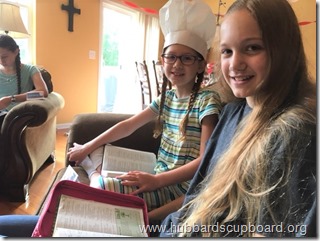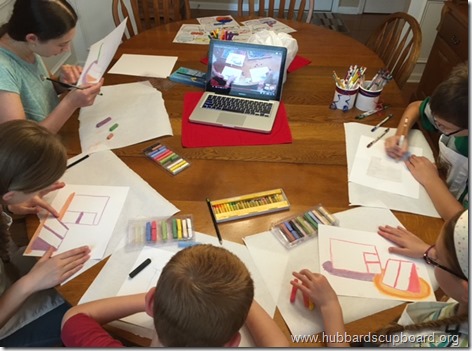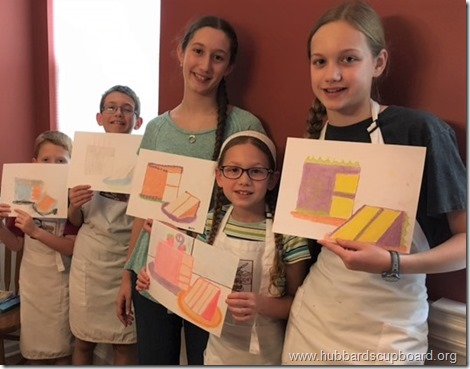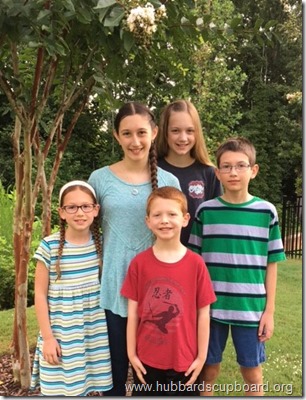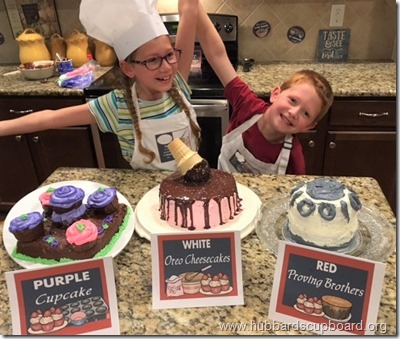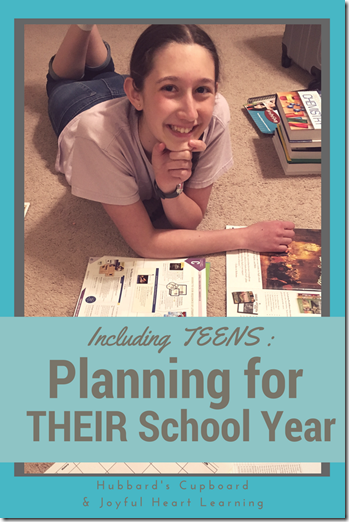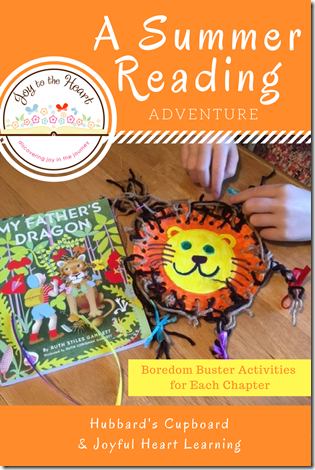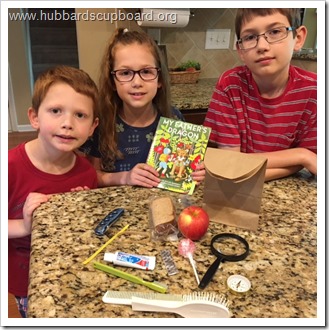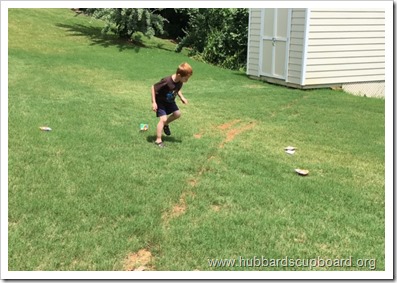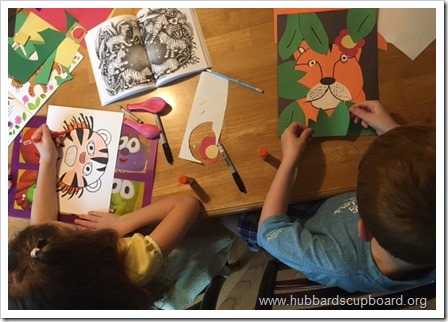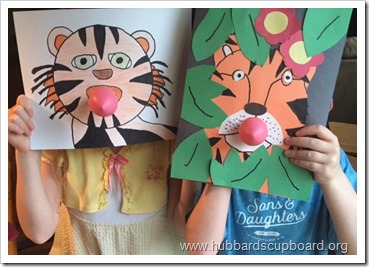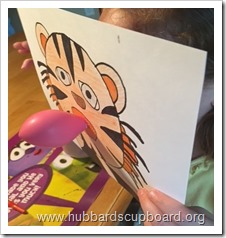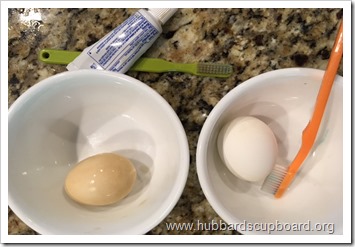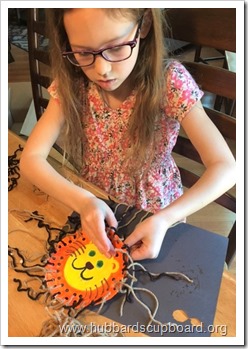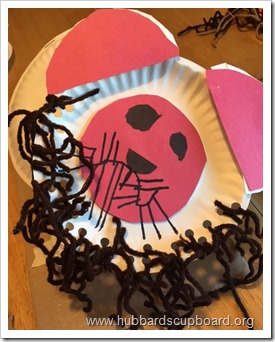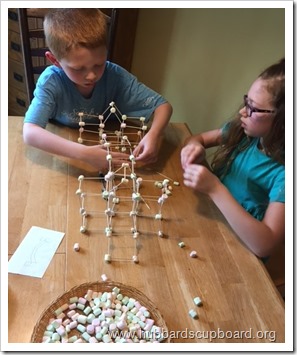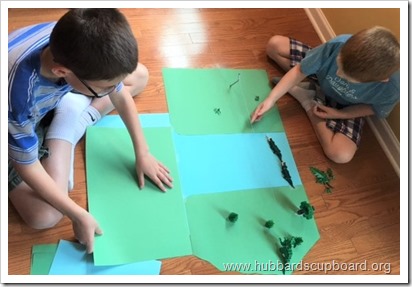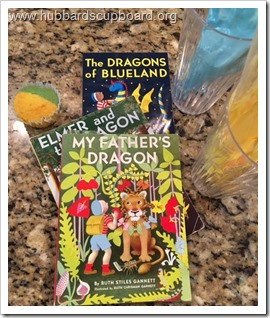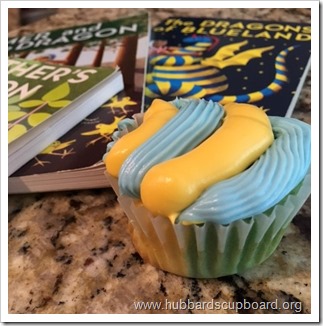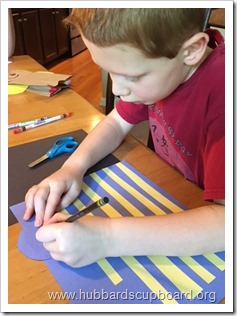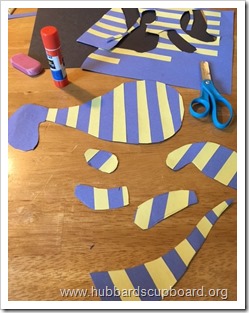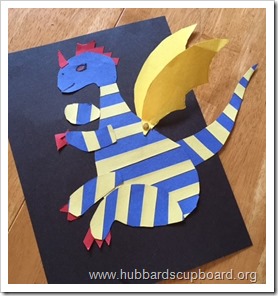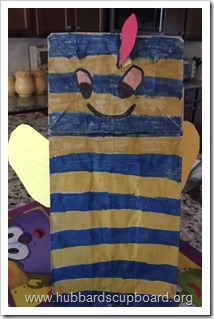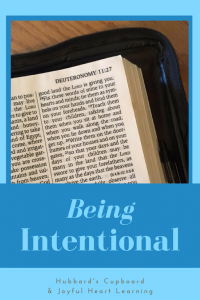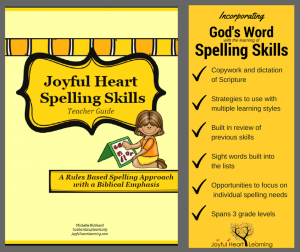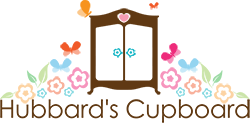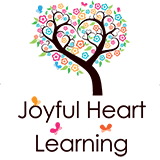Our 2nd Grader:
- Reading/Phonics: All About Reading: Level 2; beginning chapter books; Explode the Code books 5-6 ; Read Alouds
(Update: He successfully completed All About Reading Level 2 by Thanksgiving and we are moving on to Level 3!) - Spelling: Joyful Heart Spelling Skills
- Writing/Grammar/Composition: BJU English 2
- Math: Horizons 2 (and moving into 3), Xtra Math
- Science: Apologia Exploring Creation with Botany (with our nature notebook)
- Social Studies: Completing 100 Days of American History and then moving on to Geography and Missions
- Bible: God’s Gospel, God’s Promises, daily Bible reading, AWANA Sparks
- Music/Art: piano practice, choir
Our 4th Grader:
- Reading/Literature: literature books of our choosing with corresponding comprehension guides; once a month book club; free reading
- Writing/Grammar/Composition: BJU English 4; Spelling through Scripture; Word Roots Beginning; Homophones
- Math: Horizons 4
- Science: Apologia Exploring Creation with Botany
- Social Studies: Completing 100 Days of American History and then moving on to Geography and Missions
- Bible: AWANA T&T, daily Bible Reading/How to Study Your Bible
- Additions: violin lessons, piano practice, choir
Our 6th Grader:
- Reading/Literature: Veritas Press Omnibus 1 Secondary (including Chosen by God, Till We Have Faces, all books in The Chronicles of Narnia series, The Best Things in Life, Unaborted Socrates, The Eagle of the Ninth, The Screwtape Letters, and The Holiness of God)
- Writing/Grammar/Composition: BJU English 6
- Vocabulary: Word Roots 2
- Math: Horizons 6
- Science: God’s Design for the Physical World – Heat, Inventions & Technology, and Machines
- Social Studies: Beautiful Feet Books: History of Science with our Inventors & Inventions notebook
- Bible: Student Leader in AWANA/Trek, daily Bible Reading/How to Study Your Bible, Apologia Biblical Worldview: Who is My Neighbor
- Additions: Trail Life (Navigator), Student Worship Choir, Khan Academy – Coding!
Our 8th Grader:
- Reading/Literature: Veritas Press Omnibus 2 Secondary (including The Hobbit , The Fellowship of the Ring , The Nine Tailors, The Dragon and the Raven, Merry Adventures of Robin Hood, A Midsummer Night’s Dream, Winning His Spurs, The Two Towers, Henry V, King Richard III, and The Return of the King)
- Writing/Grammar/Composition: Introductory Guide to High School Writing: Poetry, Short Stories, Research, and Essays; Easy Grammar Plus (switched midyear to BJU Writing and Grammar online self paced course)
- Vocabulary: Word Roots 2
- Math: Shormann Algebra 1 with Integrated Geometry (0ver 1 ½ years)
- Science: Apologia Physical Science
- Social Studies: Beautiful Feet Books: History of Classical Music with our Classical Music Notebook
- Foreign Language: BJU Spanish 1
- Additions: Student Leader in AWANA/Trek, Cello lessons, Piano Lessons, American Heritage Girls (Pioneer)
Our 10th Grader:
- English 10 (Literary Analysis, Christian Literature, and Composition) 1 Credit
Windows to the World: An Introduction to Literary Analysis by Lesha Myers; Great Christian Writers – Full Length Christian Novels, Study Guides, and Composition; Time 4 Writing Online Course – Essay
- Algebra 2a with Integrated Geometry 1 Credit
Shormann Algebra 2 with Integrated Geometry
- Chemistry 1 credit
Discovering Design for Chemistry by Dr. Jay Wile (including labs)
- World History 1 Credit
Exploring World History by Ray Notgrass
- Bible: Issues in World History 1 Credit
Exploring World History by Ray Notgrass, Bible, AWANA Journey – Bible Reading and Scripture Memorization
- Spanish .5 Credit
Homeschool Spanish Academy – online one on one tutoring
- Physical Education and Health 1 Credit
Total Health; Gymnastics - Instrumental Music 2 1 Credit
Violin and Piano (lessons, practices, and performances) - Additions: Student Leader in AWANA/Journey, Student Worship Choir, Driving Practice, PSAT Practice, American Heritage Girls (Patriot), Recreational Blog, Script, and Book Writing
___________________________________________
Would you like to see our curriculum choices from previous years?
2016-2017 (9th, 7th, 5th, 3rd, 1st)
2015-2016 (8th, 6th, 4th, 2nd, Kindergarten)
2014-2015 (7th, 5th, 3rd, 1st, PreK)
2013-2014 (6th, 4th, 2nd, K, preschool)
2012-2013 (5th, 3rd, 1st, PreK, 2 year old)
2011-2012 (4th, 2nd, K, 3’s preschool, toddler)
2010-2011 (3rd, 1st, PreK, 2 year old, 4 month old baby)
2009-2010 (2nd, K, 3’s preschool, toddler, baby arrived end of year)
2008-2009 (1st, PreK, 2 year old, 6 month old baby)
2007-2008 (K, 3’s preschool, toddler, baby arrived mid year)
2006-2007 (PreK, 2 year old, 7 month old baby)
– Joyful Heart Character
2005-2006 (3’s preschool, toddler, baby arrived mid year)
– Joyful Heart Bible and Rhyme
2004-2005 (2 year old, 6 mo old baby)
– Joyful Heart Learning
